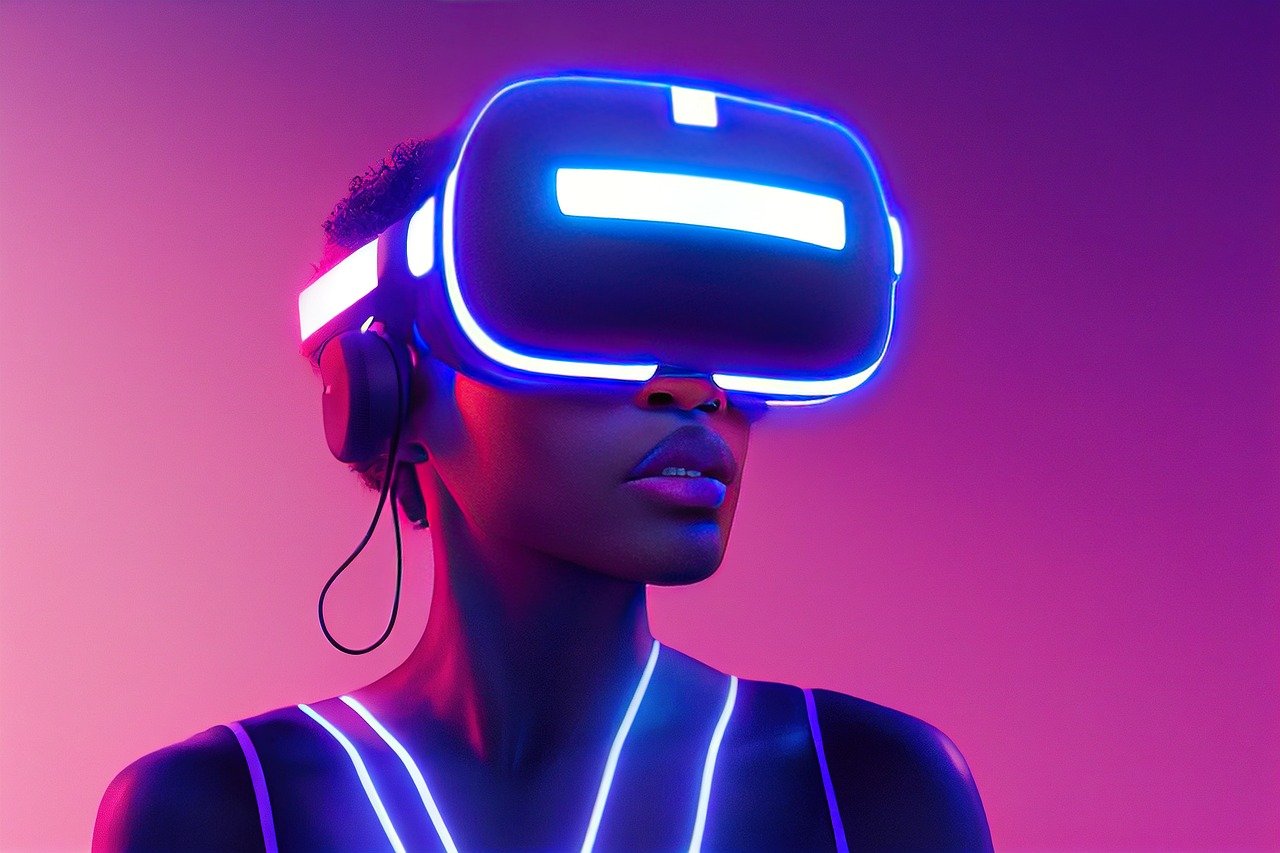The Evolution of Augmented Reality Glasses
AR glasses have undergone a fascinating transformation since their clumsy debut. Early models like Google Glass, launched in 2013, promised a sci-fi future but quickly fizzled out under scrutiny for privacy issues and lackluster features. Fast forward to today, and the landscape is nearly unrecognizable. Devices such as Microsoft HoloLens and Magic Leap now offer crisp holographic overlays, voice controls, and intuitive gesture recognition. These advances have made AR glasses more than just a novelty—they’re becoming genuinely useful. Statista’s latest projections show the global AR market leaping toward $198 billion by 2025, which reveals both massive momentum and growing mainstream interest. The optics are sharper, battery life is improving, and the interfaces are finally becoming friendlier for everyday users. This evolution signals a clear shift: AR glasses are no longer just for tech demos—they’re inching closer to widespread adoption.
Key Players in the AR Glasses Market
The race to dominate the AR glasses market is fierce, with tech’s biggest names staking their claims. Apple is the subject of relentless speculation, and rumors suggest a sleek device that could integrate with iPhones and Apple Watches, creating a seamless ecosystem. Meta (formerly Facebook) is betting big on social AR, aiming to blend your digital world with reality in ways we’ve only imagined. Then there’s Snap, which is pushing the envelope with its lightweight Spectacles aimed at social sharing and creative filters. Lesser-known innovators like Magic Leap and Vuzix also contribute specialized solutions for business and industry. IDC’s latest figures point to a breathtaking 43.8% CAGR for AR headsets between 2021 and 2026, underlining the intensity of competition and investment. Each company brings a unique vision, but all share the same ambition: to make AR glasses an everyday essential.
Use Cases Transforming Industries

The power of AR glasses extends far beyond gaming and entertainment. In hospitals, surgeons now use AR overlays to access vital information during operations, reducing errors and boosting patient safety. Manufacturing plants deploy AR glasses for real-time instructions, letting workers see step-by-step guides without taking their eyes off the task. According to a study by PTC, integrating AR can increase productivity in manufacturing by up to 30%, a staggering leap for efficiency. In logistics, pickers use AR to find items faster, slashing delivery times. Field service technicians benefit from on-the-spot troubleshooting advice via AR, minimizing costly downtime. Even education is being transformed, with students dissecting virtual frogs or exploring distant planets through their lenses. These applications prove AR glasses aren’t just a flashy gadget—they’re reshaping how work gets done across the board.
Enhancing Consumer Experiences
AR glasses are poised to revolutionize the way consumers shop, play, and interact. Retailers like IKEA let shoppers virtually “place” furniture in their living rooms, eliminating the guesswork and making purchasing decisions easier and more fun. This kind of immersive preview not only boosts confidence but also slashes return rates, saving businesses millions. According to Deloitte, a striking 40% of consumers say they’re willing to pay more for products if they can experience them through AR. Makeup brands offer virtual try-ons, letting customers see how shades look on their own faces before buying. Sports fans can get real-time stats beamed into their field of vision during games, while tourists navigate foreign cities with live translations and directions. These scenarios aren’t science fiction—they’re happening now, and they show just how transformative AR glasses could become for everyday life.
Privacy and Ethical Concerns
As AR glasses become more powerful and pervasive, they bring a host of thorny privacy and ethical dilemmas. The notorious backlash against Google Glass, often dubbed the “Glasshole” effect, stemmed from fears of surreptitious recording in public spaces. Today’s devices raise similar alarms: with always-on cameras and microphones, the risk of unauthorized data collection is real. Pew Research Center reports that 81% of Americans worry the risks of AR data collection outweigh the benefits, making trust a formidable hurdle. There are also concerns about facial recognition, surveillance, and the potential for abuse in sensitive environments. Companies must be transparent about how data is gathered, stored, and shared to avoid alienating users. Clear consent mechanisms, visual recording indicators, and robust privacy policies are essential if AR glasses are to gain widespread acceptance.
Technological Challenges Ahead

Despite impressive progress, AR glasses still face significant technical hurdles before they can go mainstream. Battery life remains a stubborn barrier—many devices struggle to last a full workday, limiting their usefulness. Display quality is another sticking point, with some models suffering from washed-out colors or limited field of view. Comfort and ergonomics also need work; according to the Consumer Technology Association, 60% of potential users cite comfort as a primary concern. Heat management is tricky, too—nobody wants to wear a device that gets uncomfortably warm after an hour. There’s also the challenge of miniaturizing components without sacrificing performance. Addressing these issues requires not just incremental tweaks but serious innovation in materials science, optics, and chip design. Until then, AR glasses will remain tantalizingly close to their breakthrough moment.
The Role of 5G in AR Adoption

The global rollout of 5G networks is a game changer for AR glasses, unlocking capabilities that were previously impossible due to bandwidth and latency constraints. With 5G, AR devices can offload heavy processing to the cloud, making glasses lighter and more comfortable. This means richer graphics, faster response times, and seamless overlays—even in crowded urban environments. Ericsson predicts that by 2026, there will be 3.5 billion 5G subscriptions worldwide, setting the stage for mass AR adoption. Imagine walking down the street and getting contextual information about buildings, people, and events in real-time. For industries like telemedicine, remote maintenance, and live events, 5G-enabled AR glasses promise to deliver a leap in interactivity and utility. The era of laggy, glitchy AR experiences is fading, replaced by fluid and immersive encounters powered by ultra-fast connections.
Consumer Acceptance and Market Readiness
Winning over consumers remains the biggest challenge for AR glasses. Gartner’s surveys show that about 40% of people are interested in using AR glasses for daily activities like navigation, messaging, or shopping, but many hesitate due to concerns about practicality, appearance, and price. The average AR glasses currently cost around $500, making them a luxury for most households. As technology matures and production scales up, prices are expected to fall, opening the market to a broader audience. Early adopters are enthusiastic, but mainstream users need to see clear value before taking the plunge. Comfort, style, and ease of use will make or break adoption. The tipping point will come when AR glasses feel less like a tech experiment and more like a natural extension of the things people already do every day.
Future Trends in AR Glasses
Looking ahead, several trends are set to supercharge the AR glasses market. Integration with artificial intelligence will allow for smarter, more personalized experiences—think real-time language translation, object recognition, and adaptive notifications tailored to your needs. Improvements in optics and miniaturization mean future devices will be lighter, sleeker, and almost indistinguishable from regular eyewear. There’s a growing focus on accessibility, with features aimed at helping people with vision or hearing impairments navigate the world more easily. Social and collaborative AR is emerging, enabling shared experiences that bridge physical distances. McKinsey forecasts the AR sector to reach an astonishing $1.5 trillion by 2030, signaling that the real disruption is still ahead. As these trends converge, AR glasses may not just complement smartphones—they could eventually replace them.
Design, Fashion, and Cultural Acceptance
The design of AR glasses is rapidly evolving from clunky prototypes to fashion-forward accessories. Leading companies are collaborating with eyewear brands to ensure that new models are as stylish as they are functional. The stigma of wearing “nerdy” tech on your face is fading as AR glasses become more discreet and customizable. Cultural acceptance is growing, especially among younger generations who value both utility and aesthetics. There’s also a movement toward modular designs, allowing users to swap out lenses or frames to match their personal style. This attention to fashion isn’t just superficial—it’s critical for mainstream adoption. As AR glasses begin to blend seamlessly into everyday wardrobes, their role as a disruptive force in consumer tech becomes even more plausible.
Developer Ecosystem and App Innovation

A thriving developer ecosystem is essential for AR glasses to reach their full potential. Tech giants are investing in robust SDKs and toolkits, inviting creators to build the next generation of AR apps. From immersive games to productivity tools and educational experiences, developers are experimenting with what’s possible when digital content is anchored to the real world. App stores are starting to feature AR-first experiences, and early success stories are inspiring more investment in this space. Hackathons and developer competitions are accelerating innovation, surfacing fresh ideas that big companies might miss. The diversity of AR apps will ultimately determine how indispensable AR glasses become in daily life. As more developers jump in, expect a surge of creativity that could redefine what it means to interact with technology.
Enterprise vs. Consumer Adoption

While much of the hype centers on consumer use, enterprise adoption is quietly driving much of the progress in AR glasses. Businesses in fields like healthcare, logistics, manufacturing, and field service are finding immediate value in hands-free access to information and remote collaboration. Companies are using AR glasses to train employees, diagnose technical issues, and streamline workflows, yielding measurable improvements in efficiency and safety. These enterprise deployments are providing invaluable feedback that informs consumer product development. The line between enterprise and consumer tech is blurring, as features proven in the workplace migrate to devices meant for everyday use. This cross-pollination could accelerate the path to mainstream disruption, as consumers benefit from technologies honed in demanding real-world environments.

